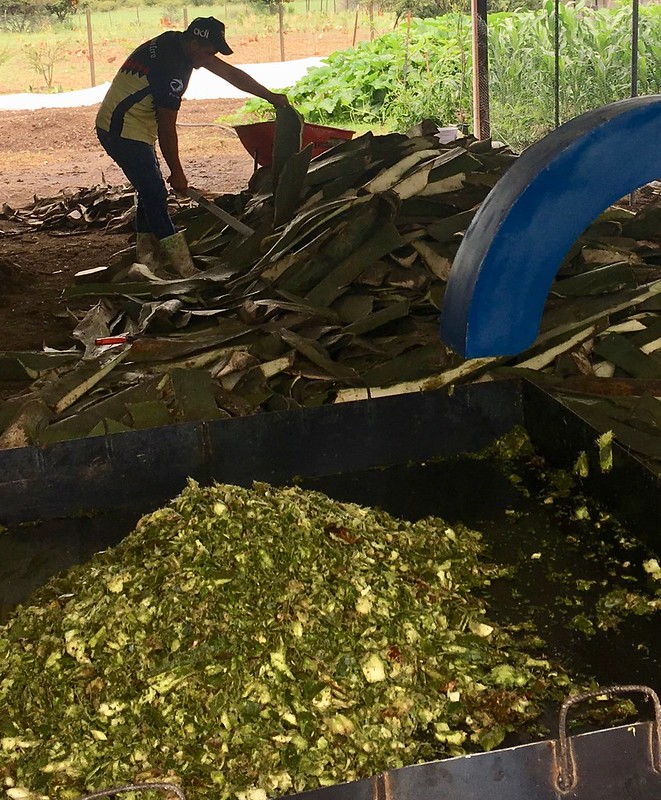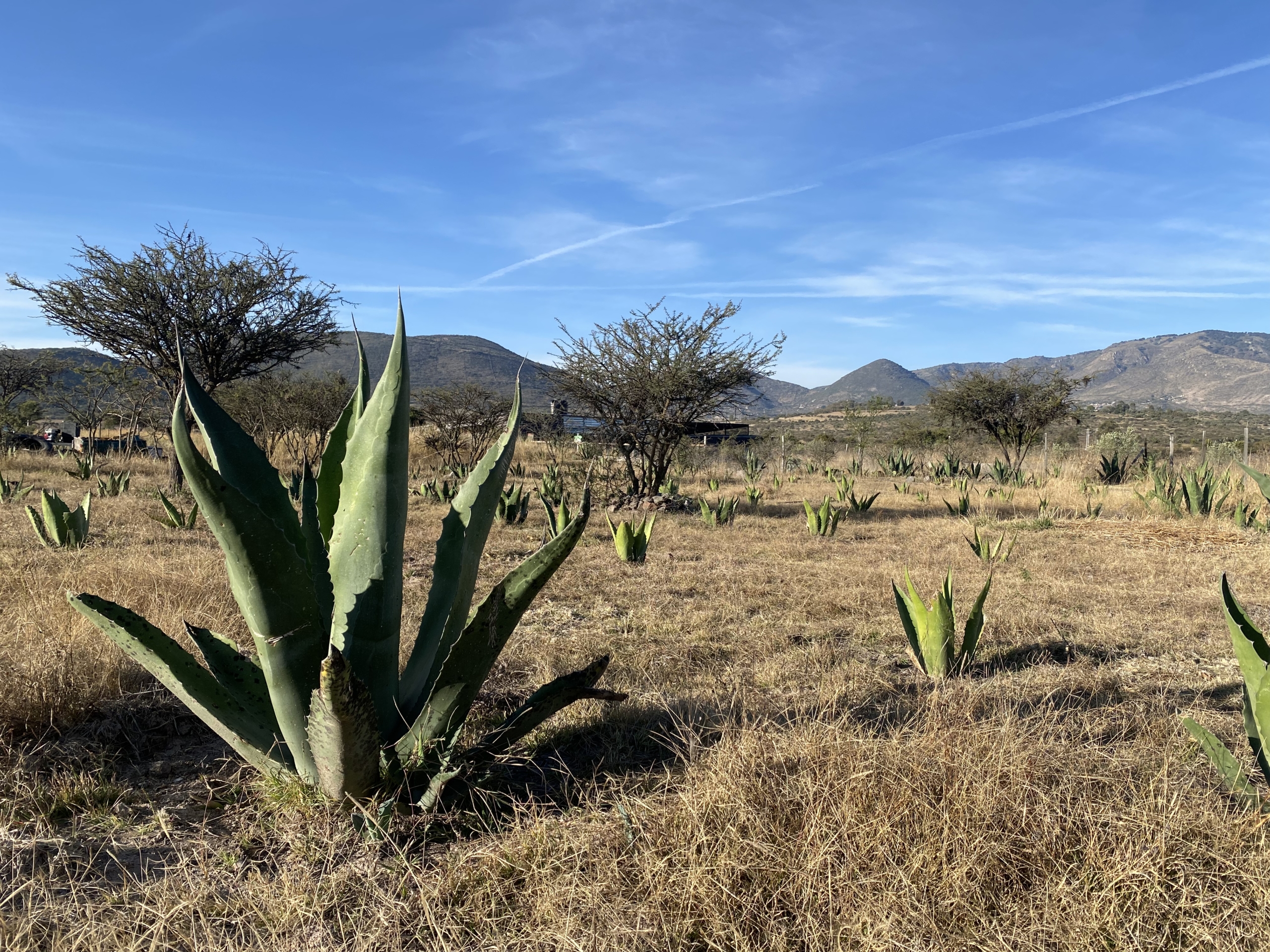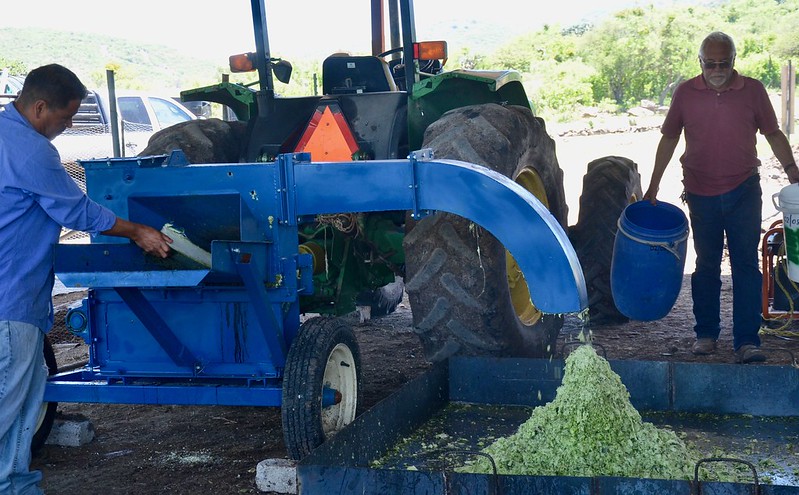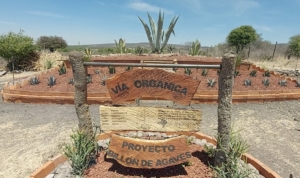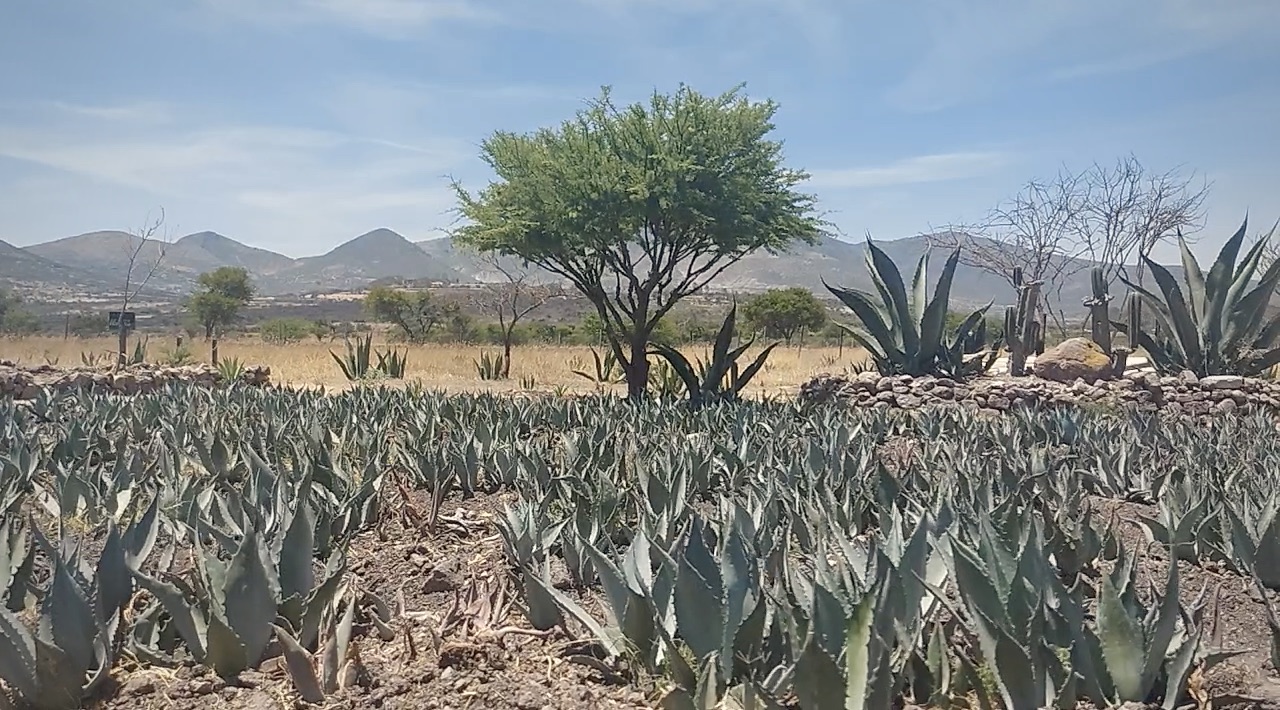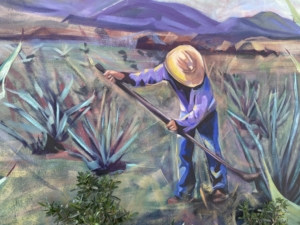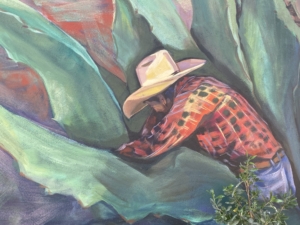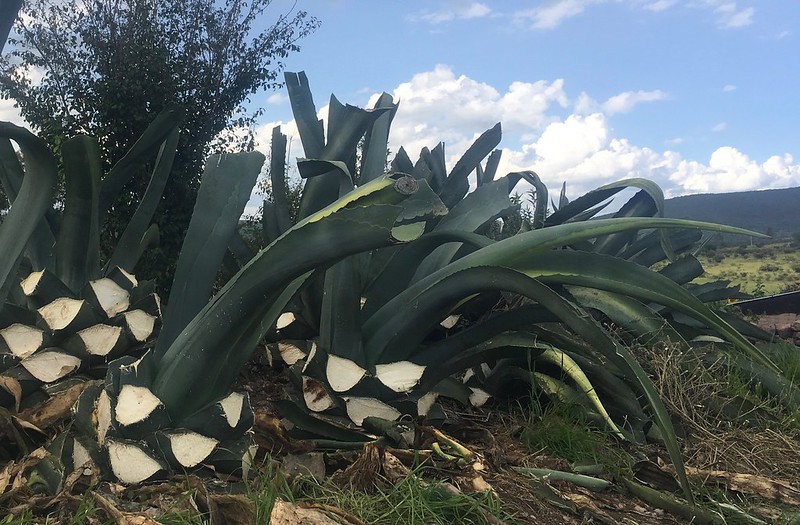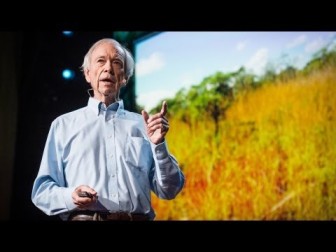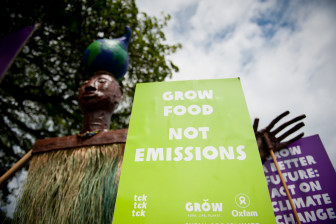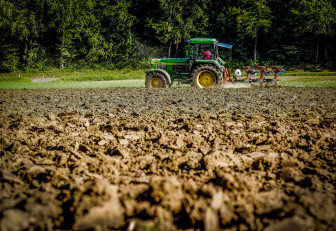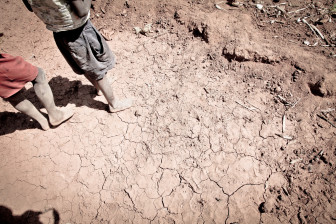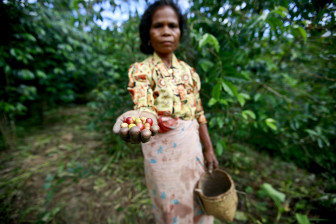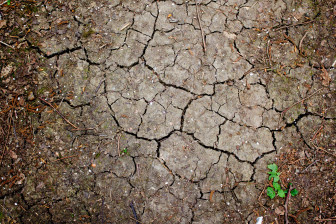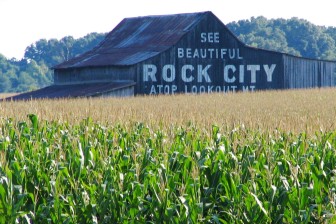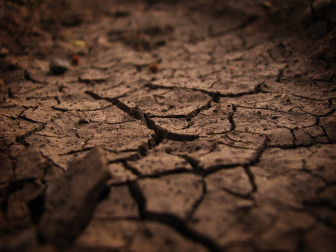What is the Project About?
The Billion Agave Project is a game-changing ecosystem-regeneration strategy recently adopted by several innovative Mexican farms in the high-desert region of Guanajuato.
This strategy combines the growing of agave plants and nitrogen-fixing companion treespecies (such as mesquite), with holistic rotational grazing of livestock. The result is a high-biomass, high forage-yielding system that works well even on degraded, semi-arid lands. A manifesto on mesquite is available in English and Español.
The system produces large amounts of agave leaf and root stem—up to one ton of biomass over the 8-10-year life of the plant. When chopped and fermented in closed containers, this plant material produces an excellent, inexpensive (two cents per pound) animal fodder. This agroforestry system reduces the pressure to overgraze brittle rangelands and improves soil health and water retention, while drawing down and storing massive amounts of atmospheric CO2.
The goal of the Billion Agave campaign is to plant one billion agaves globally to draw down and store one billion tons of climate-destabilizing CO2. The campaign will be funded by donations and public and private investments.
Why Agave?

Climate-Change Solution
Agave plants and nitrogen-fixing trees, densely intercropped and cultivated together, have the capacity to draw down and sequester massive amounts of atmospheric CO2. They also produce more above-ground and below-ground biomass (and animal fodder) on a continuous year-to-year basis than any other desert or semi-desert species. Agaves alone can draw down and store above ground the dry-weight equivalent of 30-60 tons of CO2 per hectare (12-24 tons per acre) per year.
Ideal for arid and hot climates, agaves and their companion trees, once established, require no irrigation, and are basically impervious to rising global temperatures and drought.
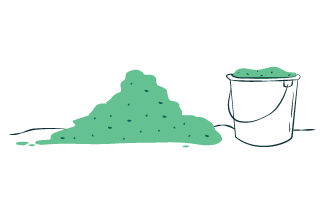
Livestock Feed Source
Agave leaves, full of saponins and lectins, are indigestible for livestock. However, once their massive leaves (high in sugar) are chopped finely via a machine and fermented in closed containers for 30 days, the end product provides a nutritious but very inexpensive silage or animal fodder. This agave/companion tree silage, combined with the restoration of degraded rangelands, can make the difference between survival and grinding poverty for millions of the world’s small farmers and herders.

Drought-Resistant
Agaves require little-to-no irrigation. They thrive even in dry, degraded lands unsuitable for crop production because of their Crassulacean Acid Metabolism (CAM) photosynthetic pathway.
The CAM pathway enables agave plants to draw down moisture from the air, and store it in their thick leaves at night. During daylight hours, the opening in their leaves (the stomata) closes up, drastically reducing evaporation.
A New Agroforestry Model
A pioneering group of Mexican farmers are transforming their landscape and their livelihoods. How? By densely planting (1600-2500 per hectare), pruning, and intercropping a fast-growing, high-biomass, high forage-yielding species of agaves among pre-existing (500 per hectare) deep-rooted, nitrogen-fixing tree species (such as mesquite), or among planted tree seedlings.
When the agaves are 3 years old, and for the following 5 - 7 years, farmers can prune the leaves or pencas, chop them up finely with a machine, and then ferment the agave in closed containers for 30 days, ideally combining the agave leaves with 20% of leguminous pods and branches by volume to give them a higher protein level. In Guanajuato, mesquite trees start to produce pods that can be harvested in 5 years. By year 7, the mesquite and agaves have grown into a fairly dense forest. In year 8 - 10, the root stem or pina (weighing between 100-200 pounds) of the agave is ready for harvesting to produce a distilled liquor called mescal. Meanwhile the hijuelos (or pups) put out by the mother agave plants are being continuously transplanted back into the agroforestry system, guaranteeing continuous biomass growth (and carbon storage).
In this agroforesty, system farmers avoid overgrazing by integrating rotational grazing of their livestock across their rangelands. They feed their animals by supplementing pasture forage with fermented agave silage.
Latest News
Reversing Desertification Shows Living Soil is Key Factor in Environmental Health
“Desertification is a fancy word for land that is turning to desert,” begins Allan Savory in this quietly powerful talk. And it’s happening to about two-thirds of the world’s grasslands, accelerating climate change and causing traditional grazing societies to descend into social chaos. Yet a surprising factor can protect grasslands and even reclaim degraded land that was once desert.
Carbon Sequestration —The Climate Change Solution That Virtually All Climate Activists Ignore
Dr. Mercola explains why it is integral to change our agricultural practices in such a way as to return and confine organic matter and carbon in the soil. Not only would it solve issues related to water scarcity, world hunger, soil erosion, desertification, and pollution, but a global shift to using agricultural practices which sequester carbon could in fact reverse climate change.
Top 10 Carbon Market Predictions for 2015 from The Climate Trust
The Climate Trust, a mission-driven nonprofit that specializes in climate solutions, with a reduction of 1.9 million tons of greenhouse gases to its name, announces its second annual prediction list of 10 carbon market trends to watch in 2015.
Connecting the Dots Between Pollution, Global Hunger, and Water Scarcity
Dr. Mercola interviews Courtney White about carbon sequestration and climate-friendly farming practices.
Farmers Put Down the Plow for More Productive Soil
No-till, or “soil conservation” farming is a growing trend in America. It can regenerate soil, increase yields, and decrease use of chemicals.
The Solution Under Our Feet: How Regenerative Organic Agriculture Can Save the Planet
There is a critical issue is missing from today’s conversation about food. The concept is simple, yet virtually unknown. The solution to our global food and environmental crisis is literally under our feet.
Women and Biodiversity Feed the World, Not Corporations and GMOs
Biodiverse ecological agriculture in women’s hands is a solution not just to the malnutrition crisis, but also the climate crisis.
We’re Treating Soil Like Dirt. It’s a Fatal Mistake, as Our Lives Depend on it
The techniques that were supposed to feed the world threaten us with starvation and short-term growth at the expense of public protection compromises long-term survival. Current farming practices must facilitate the sustainability of the world’s crops.
We Need Regenerative Farming, Not Geoengineering
While the process of geoengineering appears to be a quick-fix to a worldwide problem, it is not the silver bullet it claims to be. Besides causing awful side-effects, geoengineering does not address the industrial system, or the economic reasons for climate change. Regenerative farming, on the other hand, works in conjunction with nature to follow through on its claims of carbon sequestration.
Humans Cause Erosion 100x’s Faster Than Normal
Citing a specific scientific study that was released earlier this year, Alexander Montoro writes that before the European colonization of the Americas, the soil was healthier. After colonization, our soil degraded more than 100 times faster as a result of timber clearing and agricultural tillage. Both actions attributed to wind and water erosion that stripped the land of natural minerals, elements, and biodiversity.
